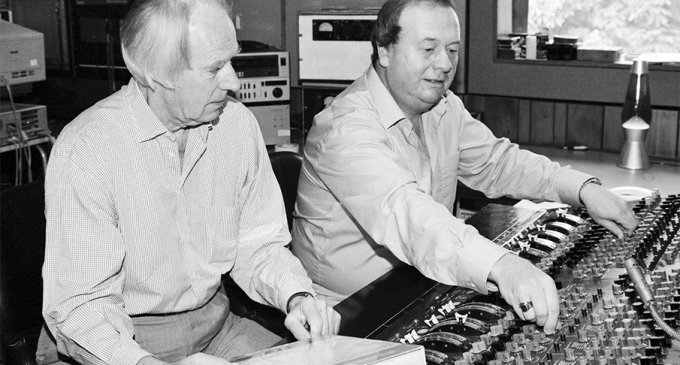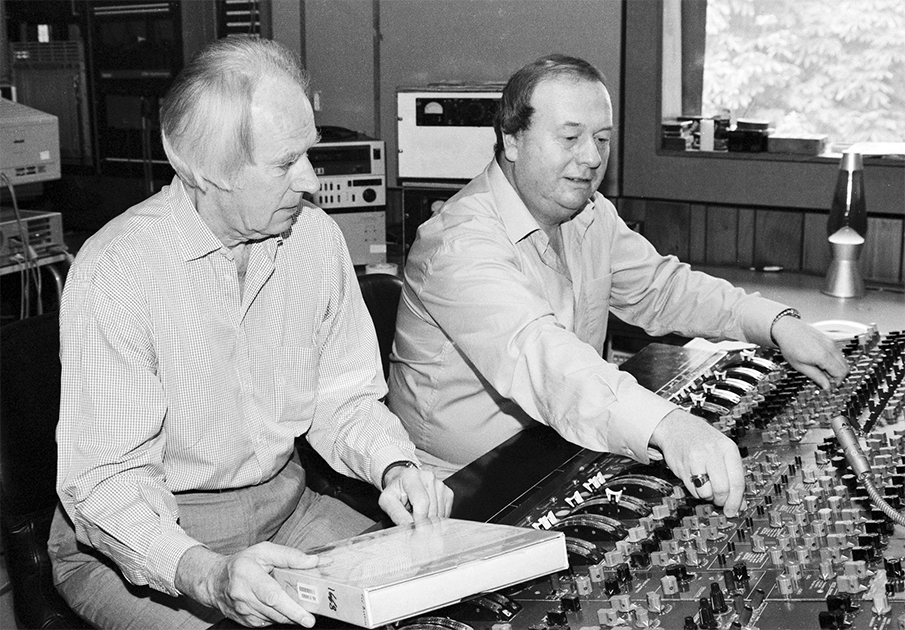Beatles Engineer Geoff Emerick Died: Rob Sheffield on Music Influence – Rolling Stone

Geoff Emerick was just a lad of 19 when he became the Beatles’ engineer, bringing his own brash approach to the experimentation the band was beginning to try in the studio. The immediate result: Revolver, the 1966 masterpiece that forever changed pop music. “A lot of that was down to Geoff Emerick,” producer George Martin told Mojo in 2007. “He brought a new kind of mind to the recordings, always suggesting sonic ideas, different kinds of reverb, what we could do with the voices. He was quite prepared to break rules. ‘You call that top? This is top!’ he’d say, turning [the dial] all the way round.” At Abbey Road, still a formal environment where the technicians wore white lab coats, Emerick meant trouble. “He was always experimenting and the bosses at EMI didn’t like it,” Martin says. “He got severely reprimanded when they found him putting a microphone in a pail of water to see what the effect was. I loved that freedom of thought.
Emerick, who died Tuesday night at the age of 72, was a crucial collaborator in the Beatles’ glory years, helping them find endless new ways to reinvent the way music sounded — and the way people around the world heard it. He’s one of the few non-Beatle voices to appear on one of their records — you can hear him say “Take two” at the start of “Revolution 1,” as John Lennon responds with a cheerful “okaaaay.” (Actually, this might have been the most polite conversation these two had during the White Album sessions.) But he’s buried deeper all over their music — for instance, the primal boom in Ringo’s drums, the massive thump everyone else went mad trying to copy? A wool sweater, which Emerick stuffed into the drum during the sessions for “Tomorrow Never Knows.”
Innovations like this endeared him to the band, who quickly came to depend on the wizardry of their teenage engineer, who they lovingly called “Ernie” or “Emeroids.” He helped them blow minds with Revolver and Sgt. Pepper, even though he’d never tried a drug more psychedelic than lager. He was a creative spirit who threw himself into the try-anything improv ethos of the Beatle sessions. As he put it in his 2006 memoir Here, There and Everywhere, ‘Whereas Paul might say, ‘This song needs brass and timpani,’ John’s direction might be more like ‘Give me the feel of James Dean gunning his motorcycle down a highway.’ Or ‘Make me sound like the Dalai Lama chanting on a mountaintop.’”
That last one was John’s command at the session for “Tomorrow Never Knows” — Emerick’s first day on the job as engineer. Talk about getting thrown into the deep end — yet he came up with tricks that helped bring John’s vision to life. At another session, John presented Emerick and Martin with an impossible task: edit two different versions of “Strawberry Fields Forever” into one song. As Martin tried to explain why it couldn’t be done, John walked out with the simple words: “You can do it.” His faith was well-placed. After hearing Emerick’s delicate tape splice, John crowed, “Good on yer, Geoffrey!” As McCartney sang on Revolver, this kid had “another kind of mind there.”
Emerick came to work at EMI Studios when he was just 15, as a humble assistant tape op on the sessions for “Please Please Me,” “She Loves You,” “This Boy” and “I Want To Hold Your Hand.” But after the Beatles stretched out on their December 1965 album Rubber Soul, even breaking all taboos by staying in the studio working after midnight, their engineer Norman Smith (“Normal” to the lads) decided this music was getting too far out for him, so he handed over the gig to the new kid. Emerick was made for this job. His youthful enthusiasm could keep up with theirs. As he wrote, “We knew that the word ‘no’ didn’t exist in the Beatles’ vocabulary.”
Emerick notoriously walked out on the White Album after one too many versions of “Ob-La-Di, Ob-La-Da.” It’s ironic that there’s so much creativity and camaraderie on the splendid new White Album reissue, to be released November 9th, which has hours of previously unheard studio sessions and demos. The whole White Album box set is a magnificent tribute to the Beatles as a team, forever shattering the myth that it was the four Beatles working solo. But making it drove the band — and everyone else in Abbey Road — to the edge of madness. Emerick broke down from the retakes and all-nighters and arguments. Yet the White Album package contains some of the greatest music he ever worked on — even if it remained one of his most miserable memories for the rest of his life.
McCartney wooed him back for Abbey Road, a much mellower experience. “Quite muted,” Emerick recalled. “Everyone seemed to be walking on eggshells, trying not to offend.” As McCartney put it later, “It was nice to return home, to something we knew and understood: George Martin, Abbey Road Studios, songs done quite quickly … not too much heavy breathing.” The band joked about calling the album Everest, after the cigarette brand Emerick smoked in the studio. (“His ciggies were just lying on the control room desk, and we went, ‘What about that? Everest!’) They even bantered about traveling to Mount Everest to shoot the cover photo, until they contemplated the prospect of having to spend that much time together. Finally, Ringo said, “Fuck it; let’s just step outside and name it Abbey Road.”
In the Seventies and Eighties, Emerick became famed for his old-school approach; Elvis Costello called him “the last of the blacksmiths.” He produced Costello’s 1982 opus Imperial Bedroom, laying on the studio frippery as if in response to the stripped-down Nick Lowe production on Costello’s previous records. He also worked on many of McCartney’s finest post-Beatles records, including gems like 1973’s Band on the Run and 1997’s Flaming Pie. He engineered the Zombies’ 1967 classic Odessey and Oracle, including “Time of the Season,” going for the same Pet Sounds-inspired precision (“a really clean American sound”) Paul requested for “Penny Lane.” He did the honors on hits like Stealers Wheel’s “Stuck in the Middle With You” and Manfred Mann’s “Pretty Flamingo,” along with albums by Seventies troopers from Mahavishnu Orchestra to Robin Trower to Cheap Trick. In 1975, he engineered a demo David Gilmour was producing for a shy 16-year-old schoolgirl, terrified at her first time in a studio, a song she wrote called “The Man With The Child In His Eyes.” Her name? Kate Bush.
Here, There and Everywhere also stands as one of the best and funniest books about the Fabs. The best story: the night John storms into the White Album sessions and yells, “I am fucking stoned! I am more stoned than you have ever been! In fact, I am more stoned than you will ever be! And this is how the fucking song should go!” Then he bangs out the piano intro to “Ob-La-Di, Ob-La-Da.” Paul is pissed — but he’s no fool, and he knows a damn good idea when he hears one. So they try it with John’s piano intro — and that’s the version we all know and love from the White Album. No wonder Emerick found it traumatizing to listen to.
It’s the book of a guy who spent countless hours with the Beatles, but never saw them outside work, so he doesn’t pretend to know or care a thing about their private lives. He’s mostly interested in technical details, the kind of lore Beatle freaks live for. How did Paul get that bass sound on “With A Little Help From My Friends”? (He sat in the control room, watching the monitors, with an extra-long lead connected to his amp on the floor of Studio Two.) How many hours did George spend trying to nail the “Taxman” guitar solo? (Two. Then Paul stepped in and got it in one or two takes.) Why is John chewing gum as he sings “All You Need Is Love”? (He just forgot it was there.) Yet the whole book is candid, irreverent, unsentimental, poignant, not to mention hilarious.
“It was always a matter of capturing the moment,” he says at the end of the 10-week Revolver sessions. “Exhausting as it was, both mentally and physically, it was a good way to work — really, the only way to work.” That work — the Beatles, their producer and their engineer on fire with new idea — changed the world.
Source: Beatles Engineer Geoff Emerick Died: Rob Sheffield on Music Influence – Rolling Stone




There are no comments at the moment, do you want to add one?
Write a comment